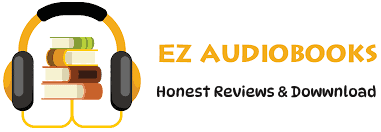Audiobook Sample
Listen to the sample to experience the story.
Please wait while we verify your browser...
- Title: How to Write a Novel
- Author: Anonymous
- Narrator: Brett W. Downey
- Length: 02:40:29
- Version: Abridged
- Release Date: 14/12/2016
- Publisher: LibriVox
- Genre: Non-Fiction, Lectures
- ISBN13: SABLIB9787542
As someone who has spent decades navigating the intricate landscapes of literature – both as a scholar and as a writing mentor – I approached ‘How to Write a Novel’ with equal parts curiosity and professional scrutiny. This anonymous guide, narrated with crisp clarity by Brett W. Downey, presents itself as a beacon for ‘the man or woman of talent’ who needs direction in the technical aspects of storytelling. The premise immediately reminded me of my early teaching days at Berkeley, where bright-eyed MFA students would often ask, ‘Can great writing really be taught?’ This audiobook provides one compelling answer.
The structure follows ten methodical chapters that dissect novel-writing into its essential components: character manipulation, plot architecture, and what the author calls ‘the apex of developed art’ in storytelling technique. Listening to Downey’s measured narration, I was struck by how the anonymous author distinguishes between the innate (‘good stories to tell’) and the teachable (‘the telling’). This dichotomy took me back to my comparative literature studies in Tokyo, where I first understood how Murakami’s bilingual storytelling creates different narrative textures in Japanese versus English translations – a vivid example of how form shapes content.
Downey’s narration deserves special praise. His voice carries the weight of experience without sounding didactic, perfectly suited for this instructional material. The audio quality (especially impressive for a free LibriVox production) maintains consistent clarity, allowing the technical advice to shine. I particularly appreciated how his pacing gave space to absorb complex concepts – like when explaining the ‘manipulation of characters,’ he subtly emphasizes key phrases that I found myself mentally bookmarking for my next fiction workshop.
Through a cultural lens, what fascines me most is how this century-old text (originally published in 1911) still resonates with contemporary writing concerns. The chapter on ‘Common Pitfalls’ could easily be addressing today’s aspiring novelists, warning against the same overwriting tendencies I critique in my students’ drafts. Yet the book shows its age in places – the assumption of a singular ‘developed art’ of storytelling feels increasingly problematic in our era of diverse narrative traditions and #OwnVoices movements.
Compared to modern writing guides like Lamott’s ‘Bird by Bird’ or King’s ‘On Writing,’ this audiobook offers less personal anecdote and more concentrated technique. While some might miss the autobiographical elements that make those other guides so engaging, I found the anonymous approach refreshingly focused. It’s like comparing a master carpenter showing their workshop (Lamott/King) versus finding a meticulously organized toolbox (this audiobook) – both invaluable, just serving different purposes.
The audiobook experience particularly enhances the instructional content. There’s something profoundly appropriate about learning storytelling techniques through oral delivery – the oldest narrative medium. I found myself absorbing plot structure concepts more intuitively while listening during my morning walks than I might have through silent reading. This reminded me of that revelatory semester at Berkeley when we compared ‘Cloud Atlas’ across formats and discovered how each medium activates different cognitive pathways for narrative comprehension.
For potential listeners, I’d recommend this especially to: 1) Writers who’ve mastered freewriting but need structural discipline, 2) Literature teachers seeking clear explanations of craft elements, and 3) Audiobook enthusiasts interested in the history of writing pedagogy. The free availability through LibriVox makes it an accessible starting point, though serious writers will want to supplement it with more contemporary perspectives on diversity in storytelling.
My most significant critique mirrors my concern with many classical writing guides: the implied universality of its prescriptions. While the technical advice remains sound, today’s literary landscape rightfully challenges the idea of a single ‘apex’ of storytelling art. The audiobook format might have benefited from a modern introduction contextualizing these historical perspectives – an addition I often make when assigning similar texts to my graduate seminars.
As I pause to refill my teacup – this time with a smoky Lapsang Souchong that matches the contemplative mood – I leave you with this thought: ‘How to Write a Novel’ is like discovering a well-worn writing desk in an antique shop. Its surfaces bear the marks of generations of writers before us, and while we might choose to arrange our modern tools differently, the fundamental craftsmanship still supports our creative endeavors. Until our next literary conversation, happy writing – and listening. Yours in bibliophilia, Prof. Emily Chen.

